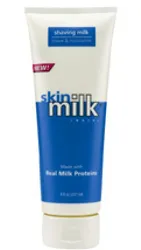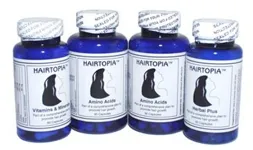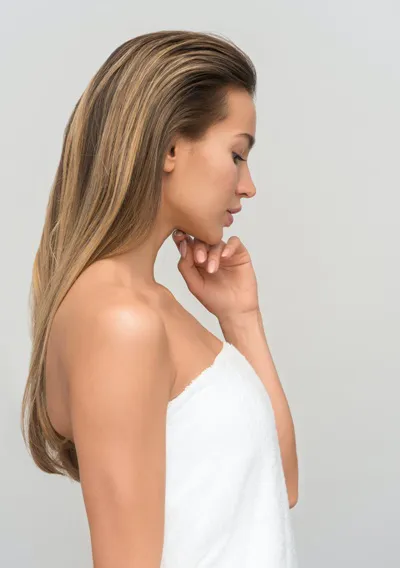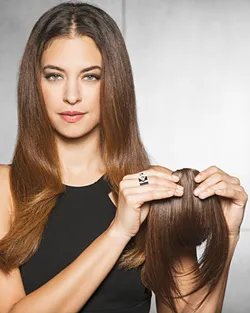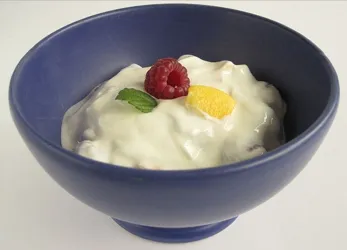
Whats Hiding In Your Hair Vitamins?
Introduction
Vitamins are quite simply natural substances found in foods. The supplements you pop into your mouth, whether they be capsules, tablets, powders, liquids or spray, all originate with foods. Hard to believe, but it's true. Vitamin A originates from fish liver oil, Vitamin B complex comes from yeast or liver and Vitamin C is best when derived from rose hips, the berries found on the fruit of the rose after the petals have fallen. Vitamin E is extracted from soybeans, wheat germ or corn. When Formulated With Quality Ingredients Vitamins Produce Results Although the benefits of vitamins are often debated by various experts, I personally have been taking them since I was first introduced by my now dearly departed chiropractic husband in 1980. He had spent a great part of his life studying nutrition and he knew more about vitamins, nutrients and herbs than anyone I have every met before. Maybe it was because he was a health obsessed Virgo or maybe because he would eat anything that wouldn't eat him first, I was impressed with the results I experienced from his recommend vitamin formulas. I clearly remember my first experience with Vitamin B3 (niacin) which produced my very first niacin flush. I thought I was dying (I wasn't), but I realized vitamins, when formulated with the highest quality ingredients, really work.
Types of Vitamins Vitamins are available in a wide range of delivery systems depending on the needs of the people taking them. The most common type of vitamins include the following: Tablets - Most common and convenient form. They easy to store, carry and have a longer shelf life than powders or liquids - and they cannot be adulterated. Caplets - Capsule-shaped tablets. These can be enteric coated so that they dissolve in the intestine, not in the stomach, which is acid. Capsules - Like tablets are very convenient and easy to store. They are the usually supplement for oil-soluble vitamins such as A, D and E. They contain fewer excipients than do tablets. Gelatin capsules -Make with gelatin, an animal product. They should be store away from light in a cool, dry area to prevent oxidation. Vegetable capsules - Free of any animal products, starches, sugars and other allergens. They're made from cellulose and plant fiber from trees, which is resistant to fungal and bacterial problems. They can withstand storage in a high-temperature environment without melting or sticking together. They're not affected by cold, dry climates that may cause gelatin caps to become brittle. Unfortunately, they can react with the ingredients in them and are therefore not used as much as gelatin capsules. They are also a lot more expensive to produce. Softgels Gel Caps - Soft gelatin capsules that many people find easier to swallow than regular capsules. Like tablets and capsules, softgels must be processed through the digestive system, so they're slower acting than their liquid and powder counterparts. A good example is softgels or gel-caps which are often much easier to swallow then regular capsules. Softgels are like tablets and capsules and must be processed through the digestive system so they're slower acting than lightening fast acting liquid and powder vitamins. Powders - Advantage of extra potency (1 tsp of many vitamin C powders can give you as much as 4,000 mg) and the added benefit of no fillers, binders, or additives for anyone with allergies. Liquids - Available for easy mixing with beverages and for people unable to swallow capsules or tablets. Intra-oral sprays - Deliver low-dose concentrations of nutrients directly into the mouth, under the tongue. They are absorbed into the bloodstream through the mucous membranes and bypass - the gastrointestinal tract, generally within fifteen minutes. Sublinguals - Tablets that dissolve under the tongue. For vitamin B12 this is a recommended form of supplement delivery. Patches and implants - Supply continuous, measured amounts of nutrients, though at this writing they are available only for a limited number of nutritional supplements and are considered drug-delvery systems in the United States. Tablets are the most common form of vitamins. The advantageous is that they can't be tampered with like powders, liquids or even soft gels. However, if the tablets are large or a lot of tablets have to be taken they can be harder to consume than other vitamin delivery systems. Tablets, generally speaking, are the less expensive to manufacture making them generally the least expensive form of vitamins. Tablets also may not work for people with digestive, stomach or related challenges. When the digestive system is sluggish the tablets may be passed right through the body and be minimally absorbed. In some cases the tablet will be expelled through the elimination system if it's not digested properly. What You Should Know About Fillers And Binders
Often there's more to a vitamin supplement than meets the eye. Sometimes more than meets the label. Fillers, binders, lubricants and the like do not have to be listed and often aren't. But if you'd like to know what you're swallowing, the following list Diluents - These are inert materials added to the tablets to increase their bulk, in order to make them a practical size for compression. Dicalcium phospate which is an excellent source of calcium and phosphorus, is used in the top brands since they are the most expensive fillers. Dicalcium phosphate is derived from purified mineral rocks. It is a white powder. Sorbitol and cellulose (plant fiber) are occasionally used. Binders - These substances giver cohesive qualities to the powdered materials, otherwise, the binders or granulators are the materials which hold the ingredients of the table together. Cellulose and ethyl cellulose are used most often. Cellulose is the main constituent of plant fiber. Occasionally lecithin and sorbitol are used. Another binder that can be used, but that are you should be aware of and watch out for. This is acacia or gum arabic, a vegetable gum that has been declare Generally Recognized As Safe (GRAS) by the Food and Drug Administration (FDA). Lubricants are slick substances added to a tablet to keep it from sticking to the machines that punch it out. Calcium stearate and silica are commonly used. Calcium stearate is derived from natural vegetable oils. Silican is a natural white powder. Magnesium stearate can also be used. Disintegrators. Substances such as gum arabic, algin and alginate are added to the table to faciliate its breakup or disintegration after ingestion.
Colors are added to make the tablet more aesthetically pleasing or elegant in appearance. Colors derived from natural sources, like chlorophyll, are best. Flavors and sweeteners. Used only in chewable tablets, the sweeteners are usually fructose (fruit sugar), malt dextrins, sorbitol, or maltose. Sucrose (sugar) is rarely used in better brands. Coating material. These substances are used to protect the tablet from moisture. They also mask unpleasant flavor or odor and make the tablet easier to swallow. Zein is one of the substances. It is natural, derived from corn protein, and a clear film-coating agent. Brazil wax, which is a natural product derived from palm trees, is also frequently used. Drying agents These substances prevent water-absorbing (hydroscopic) materials from picking up moisture during processing. Silica gel is the most common drying agent. Storage RequirementsVitamin and mineral supplements should be stored in a cool dark place away from direct sunlight in a well-close, preferably opaque, containers. They do not have to be store in the refrigerator unless you live in the desert. To guard against excessive moisture, place a few kernels of rice at the bottom of your vitamin bottle. The rice will work as a natural absorbent. If vitamins are kept cool and away from the light and remain well sealed, they should last for two to three years. To insure freshness your best best is to buy brands that have an expiration date on the label. Once a bottle is opened you can expect a six-month shelf life. Summary There are a range of DIY tips for instantly lightening and brightening dull, drab hair color with the Winter blahs. Although there are some tips you can easily do yourself, sometimes a professional hair colorist is the best bet. - Revised Date: 01/03/12 | ||||||||||||
| If you want to talk more about this or other hair care articles on HairBoutique.com or anywhere else, please post a message on HairBoutique.com's Hair Talk Forums.
|
Social Media Network Information
Please follow us on Twitter at: https://Twitter.com/HairBoutique. I look forward to meeting new people from all walks of Twitter and learning from their Tweets.







